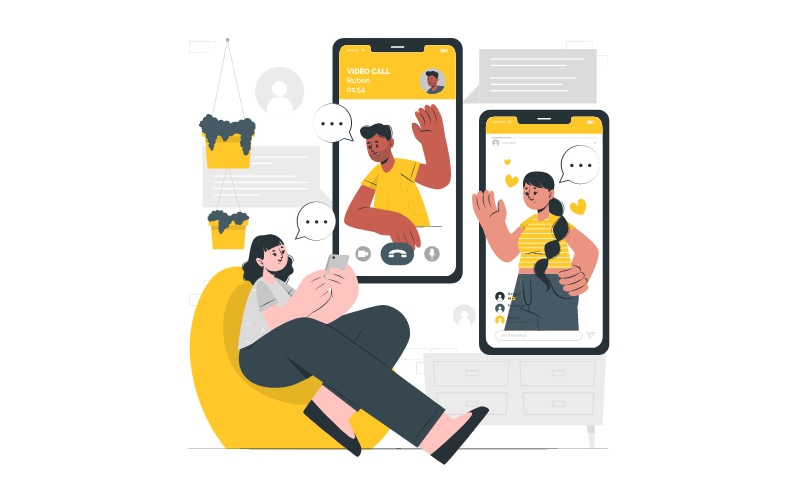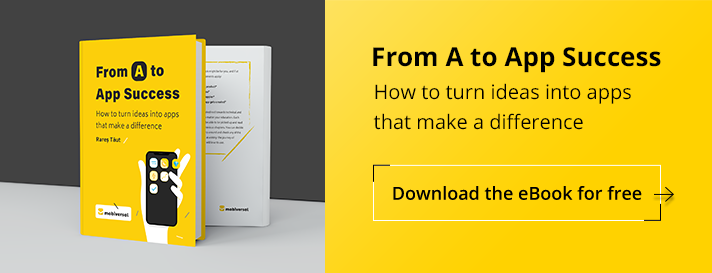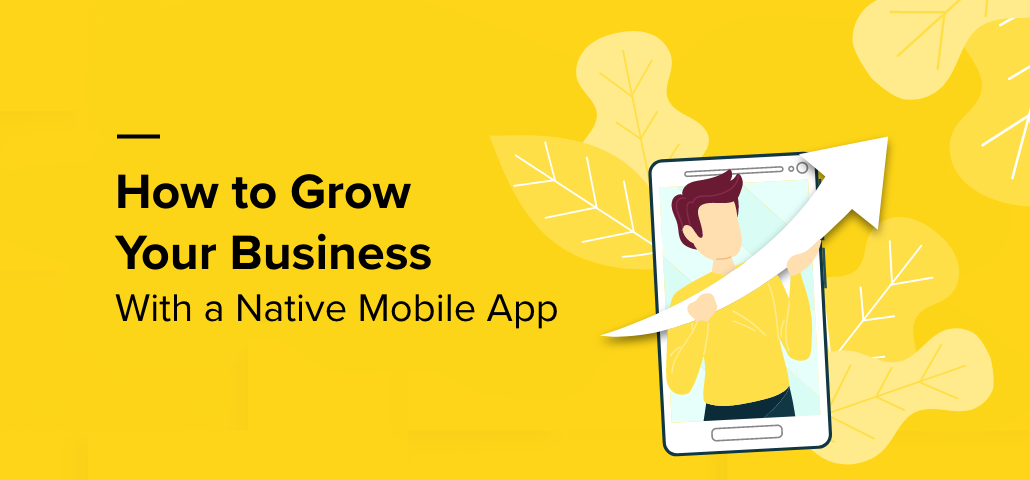The Role of Discovery Phase in App Development: Key to Success
One of the most important and defining attributes for the success of an app nowadays is the strategy behind it. It’s not enough to just develop an app anymore, as there are a plethora of apps out there on the market. Statistics show that currently, Apple has 1.96 million apps in their store, while Google boasts about 2.87 million apps.
With that kind of competition, it’s hard to stand out. You need to have a good budget to be able to be seen. Besides the budget, you also need to have a good product strategy behind everything you do next.
The product strategy sits at the cornerstone of your every effort, because you need to know who to target, and know to tailor your operations and everything you’ll do to fit the needs of your target market.
The mobile app discovery stage is an important part of defining a strong and successful product strategy, just as important as defining your app’s objectives and having a pixel-perfect app design. We’ll take a look at what mobile app discovery means and how it can be beneficial for a business owner.
Mobile app discovery process is the initial step in developing a custom mobile app, it lays the foundation for the design and development that follows. Product discovery consists of two phases – research and analysis, figuring out exactly who your audience will be and how your product fills their needs in an innovative way.
Does a mobile app need a product discovery phase?
That sounds great, but you might ask yourself, ‘What if I don’t need it?’. There is a simple checklist for you to go through in order to figure out if your mobile app needs a discovery phase or not. So let’s get through it.

Go through the following questions and see which apply:
- You know the root core of the problem you are trying to solve
- You know who are the ones that will benefit from solving it
- You have a clear overview of what you need to do and how to do it
- You have evidence that solving this problem will bring value to the user (desirability) and/or the business (viability)
- You already have a solution that works / are confident it will work for sure
- You have evidence that users will have no issue using your solution in the the current form (usability)
- You know what technical solution to adopt and its dependencies to existing or future processes (feasibility)
- You know the solution is future proof for the business in all its implications (viability)
- You know the solution is the best compromise between desirability, viability and feasibility
- You clarified all the priorities and requirements for refining the solution
- You planned how you will measure the success of the solution once it is released to the market
Make sure you go through the questions and honestly answer yes or no to each one. If you can answer yes to all the questions, through evidence rather than assumptions, we can confidently answer that we do not need to do the discovery phase. However, if you answer at least one of these questions with no, you will need at least some degree of discovery sessions.
This way, you will be able to clearly answer yourself and your investors if you need proper discovery workshops to find out what you need to build.
Mobiversal has a rich experience and an outspoken portfolio in full mobile apps development services. We offer product discovery workshops regardless of your niche, and whether or not you have an existing app already.
What are product discovery steps?
The purpose of this application discovery process is to help the people involved do the following:
- Understand the project and what needs to be done
- Get agreement and direction for everybody involved
- Discover the business’ and the client’s needs
- Align everybody on the same goals

The product discovery process is a simple way to help any business understand, prioritize and focus on a clear vision and a plan to help them achieve their goals. It helps teams conduct the strategic planning process together. Achieving understanding, definition, and agreement in one process vs. having to go back and forth for months.
You can think of it as a business planning tool. Imagine the usual degree of back and forth that needs to be done while iterating over the project, as everyone involved, from developers to analysts to product owners and stakeholders actually find out what the thing they build is actually about.
With the help of the discovery workshops, you get to converge all the various opinions of the stakeholders into one single mission for your product.
Basic requirements
In order to properly conduct and get the most out of the application discovery process, we try to have a few basic requirements that must be met. If not, the discovery workshops will be severely lacking in a diversity of relevant opinions and can lack optimum results.
- Getting everyone live at the same time
Getting the decision-makers live during the workshops is key for the success of the discovery sessions, and especially different members, while not expanding to unnecessary numbers and types of people, only the key people in the business. One from tech, a creative one, marketing and business-side. These are broad categories that apply to a variety of actual job titles, and depending on the type of business you are doing the workshop on, participants might vary.
- Providing visuals
The second one is providing a visual way for all the people involved in the discovery process to see the data that comes up as the workshop progresses. Seeing things written down can really help people understand, form and strengthen existing beliefs that they knew they had, but didn’t see them materialized on a written piece before.
- Enjoying the process
The third one is to enjoy the whole process. To get the most out of each discovery session, we try to have a fun and relaxed atmosphere where everyone can speak their mind. If people are tense or afraid that other people will laugh or put down an opinion, for sure they won’t want to express another one even if they get the chance. Getting people to come out of their shell and freely express their beliefs can be hard, that’s why it’s important to set the tone of the workshop so that everyone can see that it’s fine to express anything, within reasonable limits.
- Working together
The ultimate outcome of these product discovery sessions is to help people work together to reach the same goals, have the same vision, and be on the same page. Providing the structure for people to freely express themselves, let them add their opinion to the table, and ultimately getting everyone to agree to the prioritization of the ideas we come up with is the way to align everyone towards the same goals.
Aligning the team
After getting the key people all onboard and live (either in person or online), the first objective is to find out what everyone wants out of these workshops. Some people will want clarity on the next steps, others will want to better understand the objectives of the business, learn who the customers are, etc. At this stage in time, we try to see what everyone wants out of these workshops in order to provide a narrative and a tone that will help us match what everybody wants to find out. This is a short exercise, but extremely valuable, as we get to have a taste of what each stakeholder is curious about and what they want.

Finding out brand specifics
Most of us think in words and sentences first. Words help us define concepts and speak to us in a way second only to feelings. That’s why during this exercise, we find out what describes the business in its various key aspects. This is an exercise that involves everyone and lets everyone pitch in with ideas. The key aspects of the business are the culture, customers, voice, feeling, impact, and x-factor. For each one of these aspects, the stakeholders need to come up with representative single-word attributes. The words need to be aspirational and positive, speaking of ideals, not negative, because reality happens in language first, that’s why we describe what we want to be, not what the situation is or was.
After coming up with the various brand attributes, we get to narrow down to the most important ones, as these are the anchor and the support pillars for each of the key aspects we’ve talked about above. These attributes will synergize together and form the brand statement, which is the essence of the brand.
For example, after applying this exercise to ourselves, the following brand statement resulted:
Mobiversal provides digital products to trusting customers in a reliable collaboration with a trustworthy voice, helping them feel satisfied and have their life improved.
This is all while our X-factor is consultancy, as we put a high level of importance to consulting every stakeholder to make the best choice with the amount of information we have.
The brand statement accurately reflects what we as an agency want to provide and how we want to do it.
Finding out who the customers are
Moving forward, now we need to see who the customers/users of our product will be. Normally, people generally think they know who their customers/users are, but after going through this exercise many stakeholders seem to be enlightened to who their customers actually are, and what they actually want.

Depending on the type of product that we need to do, we found out that 3-4 user profiles are enough to cover all the main user archetypes of a product, but some might require less, others more, depending on the specific nature of the product.
This is a cornerstone in the UX of a product, and most marketing campaigns are also based on user profiles. Going in a similar convergent way, we get to establish the demographics and the story of the user profile. Since the user profile is an archetype, it needs to be someone that isn’t a real person, or else you will tend to base the user profile on a single, real-life customer, which is too niche.
After establishing the demographics and the story of a user, we can figure out what their needs are and the solutions we can provide to them. These needs will be used when coming up with features and product elements, in an exercise down the line.
Finding & prioritizing the business goals
After we finish with the customer profiles (and finding what they actually need), the next in the mobile app discovery process is finding what the business itself (be it the product, the app, etc.) needs.
There are 3 key aspects we get into, regarding the business. The first is revenue, how will the business make money. The second is awareness, how will the business get noticed. The third is efficiency, which processes and tools will help the business achieve its goals. Each entry will get its own score based on a number of aspects, such as doability, desirability, etc. Depending on each one’s score and its expected timeframe, each one gets higher or lower in the priority hierarchy.
These goals are crucial, together with the needs of the users which we found out in the previous exercise, in order to ideate in the next exercise.
We start diverging with all the ideas and various attributes we came up with up to this point in order to create a coherent narrative and actionable steps/features for the product.
Diverging brand specifics
In this product discovery technique, we focus on the three most important brand attributes, namely the ones for voice, feeling, and impact. At this stage, it’s all about narrowing the support pillars for these key attributes, as the main anchor is already established for all of them.
This is another joint exercise, as stakeholders will need to prioritize the attributes that speak most to them and the product. After doing this exercise on ourselves, we came up with the following:
Through a trustworthy, professional and knowledgeable voice, we leave our customers feeling satisfied, confident, reassured and optimistic by providing them with quality, reliability, better time management and ultimately a long lasting life improvement.
You can see the above statement as the result of us diverging the brand attributes that define our voice, feeling and impact into a mission statement that we keep as a North star for our business.
The same can be applied to any other business, and if the previous compounding exercises have been done as accurately as possible, the results that will be shown here will be edifying to the stakeholders.
Criss-crossing the data
Up until this point in our discovery sessions, we managed to extract and diverge on the data that will help us come up with the ideas, features, and solutions for the product by meeting both the business’ needs and the user’s needs.
For example, if a customer needs to get more organized in order to better take a hold of their work-life balance, and the business needs to make money through subscription, the choice here would be to provide an affordable subscription-based solution that integrates reminders for better time management.
This way, we get to come up with ideas that will be mapped directly on what the user and the business need.
User narrative
Our final step in the discovery process deals with constructing a narrative that takes the user through the whole process of finding out the brand towards becoming a convinced advocate of it.
We find out where they discovered the product, what made them act and buy the product, and why they became a returning customer. For each stage, by going back to our criss-crossing exercise, we will see that we find actions from that exercise that apply to each stage.
Below you can see one of the customer narratives that resulted through the process.
Customer archetype 1 discovered us through referrals and our website and our experience with B2B software together with a recommendation made him engage with us.
The trust that we built throughout our initial discussions made him want to work with us, while the satisfaction provided by the finished product transformed him into a returning customer. The good results provided through our collaboration make him recommend us to others, while the extra mile and us exceeding his expectations turned him into an advocate of Mobiversal.

Now, for each major section of the narrative above, we can see actionable steps that we came to within the previous exercises. For example, for the ‘trust that we built throughout our initial discussions, the idea of providing a clear and simple presentation of the steps needed to launch an app is something that resulted based on some of our needs as a business and the customers.
This way, you’ll get to see how your interaction in time with each major customer archetype will mostly pan out, and how / when to best intervene in this journey together.
Conclusion
And this concludes the discovery workshop. The conclusions that are reached during this process can require further analysis and documentation that help us prepare the terrain for the next, actionable steps that need to be taken for the business and the product.
The discovery workshops are an invaluable part of building a product, and it’s something that helps both the product team and the product owners better understand not only what they want to build, but also what they need to build. Even a slight deviation from the path (or even worse, not knowing the right path) can be the reason between having a successful and complete business/product, and failing and not having even a slight clue why it didn’t catch on.
Setting the right path and figuring out your values, who your customers are (rather than creating a niche), is much easier. Nowadays, with the amount of mobile apps and existing products, the product strategy (of which the Discovery process is part of) is one of the few defining aspects of a successful product.



